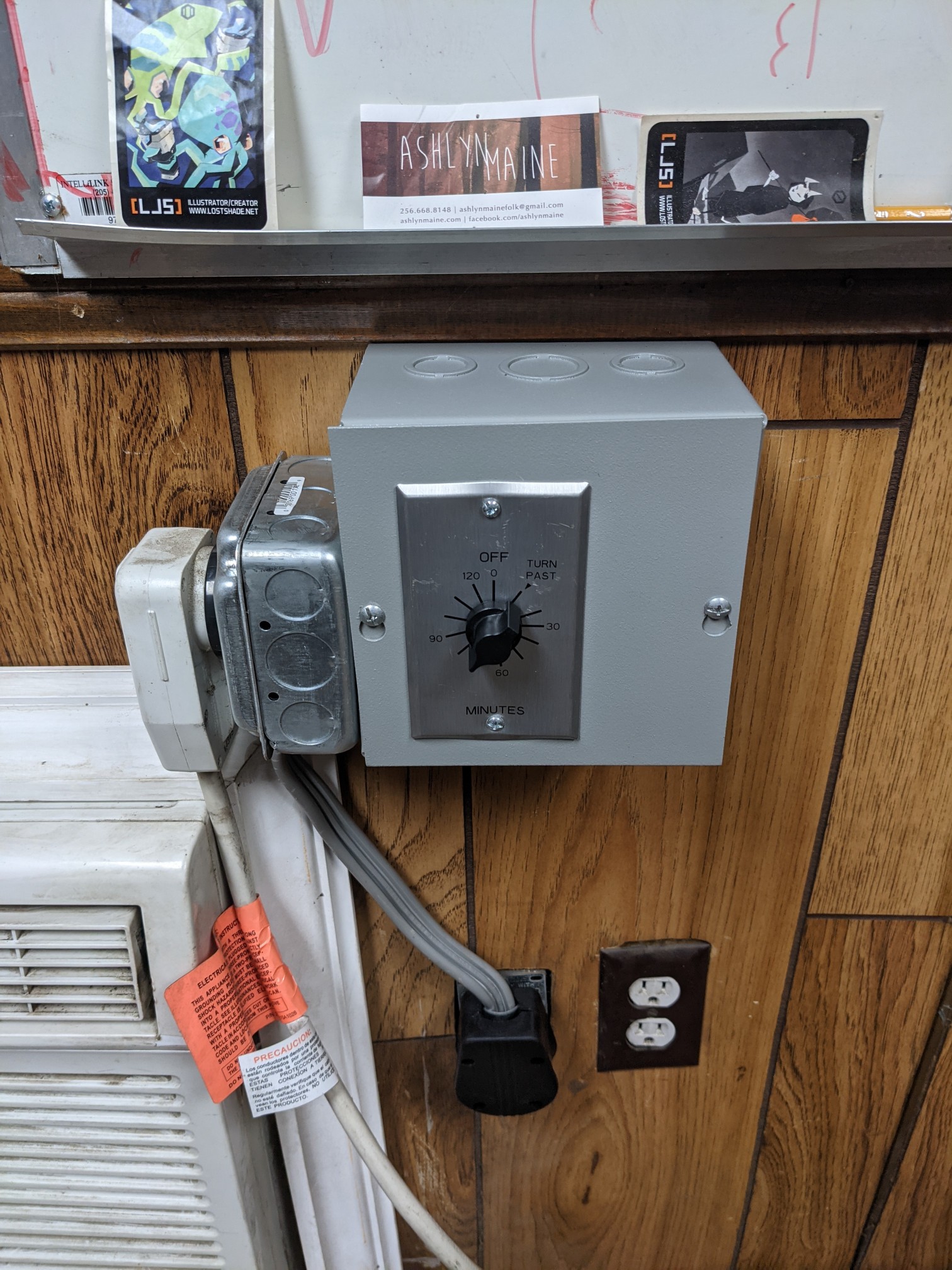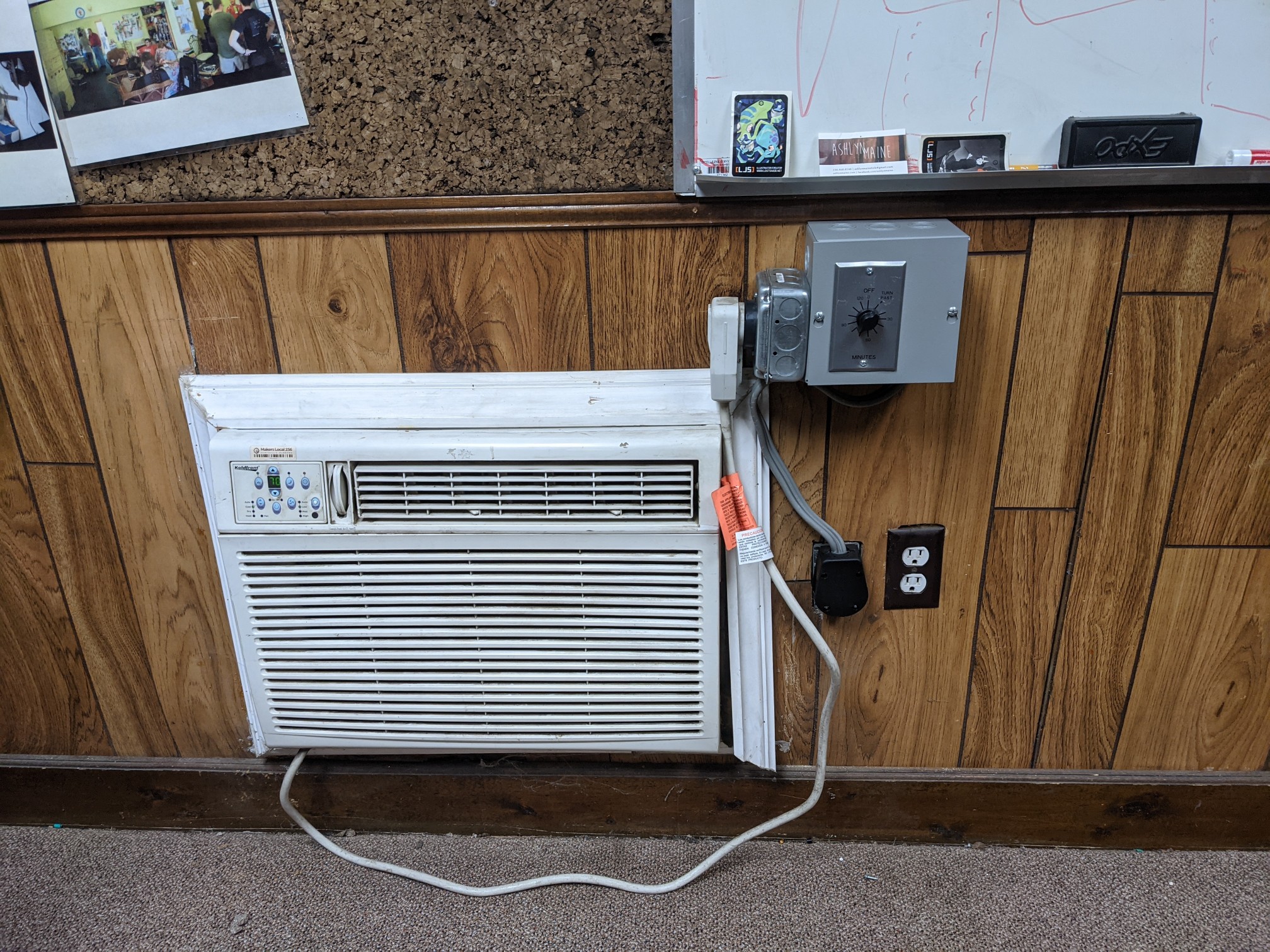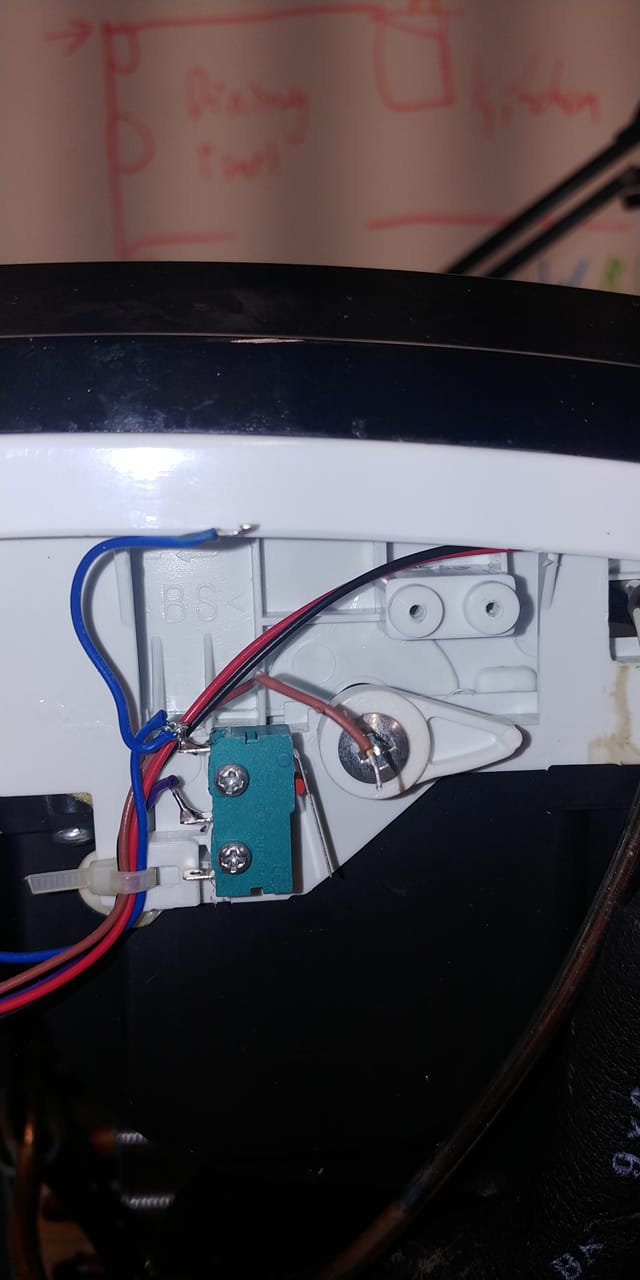Make Pumpkin, Thursday Oct 28th

Come carve pumpkins with us at the make shop!
We will have a limited collection of carving tools and stencils, and we’ll provide tea lights for pictures afterwards.
Thursday Oct 28th from 6pm to 9pm.
BYOP

Come carve pumpkins with us at the make shop!
We will have a limited collection of carving tools and stencils, and we’ll provide tea lights for pictures afterwards.
Thursday Oct 28th from 6pm to 9pm.
BYOP

“Someone forgot to turn off the air conditioner last night.”
Members have heard this grumble since we moved into our third space (no pun intended).
Thanks to the actions of Aaron Rissler, we now have our 220V AC unit on a mechanical timer switch.
His implementation not only will save the shop money, but also help the environment by cooling the space when it isn’t in use.
This simple design is comprised of the following parts:



Who: You!
What: Nerd Rummage Sale v7.1
When: Oct 2nd, 2021
Where: 414 Stevens Ave
Event Link
Table Sign Up Link
Over the past year what have you squirrelled away? Nerdy toilet paper? Boba Fett action figures? Well you don’t need those things, but someone else does!
Come down to this year’s Nerd Rummage Sale and see what wonders there are to behold.
To apply for a booth at the nerd rummage sale, please click this link to the application form: https://forms.gle/z6Ax4e4CzYLDuRnH8
Makers Local 256 is thrilled to have a PSA being played via local NPR station WLRH. You can tune to WLRH at 89.3 FM.

A good ice maker can run you over $100, and nothing is made to last anymore. All too common makers buy home appliances only to discover that the manufacturer used a part that would wear out in under a decade. These mini switches are $5 a bag on amazon, and if you have the time to kill, you can get just the amount you need from eBay, or harvest them out of an old printer.
This repair was done using the soldering station at Makers Local 256.
Makers Local is still mostly inaccessible to the public right now, but our newly elected board is cooking up a plan to host a socially distanced \ Covid safer public night.
Media error: Format(s) not supported or source(s) not found
Download File: https://256.makerslocal.org/blog/wp-content/uploads/2020/10/iceMaker_Before_SD.mp4?_=1
Media error: Format(s) not supported or source(s) not found
Download File: https://256.makerslocal.org/blog/wp-content/uploads/2020/10/iceMaker_After_SD.mp4?_=2Copyright © 2025 Makers Local 256 | Powered by Simple Helix and WordPress